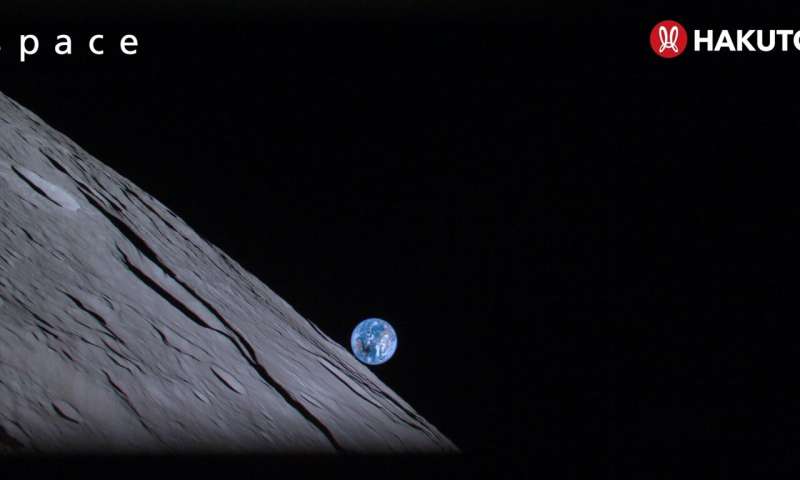This is the earliest targeted landing date, but it could change depending on how the checkouts proceed.
The Hakuto-R mission launched on Dec. 11, 2022 along with the Lunar Flashlight mission on a SpaceX Falcon 9 rocket. Ispace is aiming to become the first commercial company to have an uncrewed lunar lander touch down safely on the moon. Hakuto-R was originally designed for the Google Lunar XPrize. But it got a chance to launch only in 2022, long after the competition was over.
The launch trajectory took the spacecraft on a journey approximately 1.4 million km (879,000 miles) into deep space before it successfully entered lunar orbit on March 21, 2023 after a several-minute controlled burn.
The ispace Series 1 Lunar Lander stands about 2.3 meters tall (7.5 ft) and has four landing legs, and fully fueled with its payload, it weighs roughly 1000 kg (2,200 lbs). The main body is an octagonal prism, 1.6 meters high and about 1.6 meters (5.25 X 5.25 ft) across its widest diameter. It has one main landing thruster and six assist thrusters. Its electronics are powered by solar panels.
The startup is planning a second lunar lander mission perhaps in 2024, depending on the success of this first mission. In addition to launching lunar landers, the company aims to one day deploy satellites around the moon. Ispace says it is negotiating with multiple companies for transporting payloads to the lunar surface, as well as carrying payloads to orbit around the moon.
Provided by Universe Today



